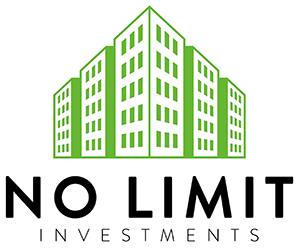We’ve worked with investors at every level, and one thing remains consistent—understanding how refinancing works can be the difference between cash flow growth and missed opportunities. At No Limit Investments, we help guide real estate investors through smart funding options that maximize returns and support long-term portfolio growth. If you’re considering rental property refinancing loans, this article breaks down what matters most.
What Are Rental Property Refinancing Loans and How Do They Work?
Rental property refinancing loans allow investors to replace an existing mortgage with a new one—usually to access better terms, lower interest rates, or pull out equity. These loans are common among those looking to improve their cash flow or reinvest in more properties. Unlike residential refinances, these are often non-owner occupied mortgage loans, meaning lenders evaluate the deal differently.
Most refinances fall into two categories: rate-and-term or cash-out refinance for investment properties. In a rate-and-term, you’re replacing your loan with a better one. In a cash-out, you’re tapping into your property’s equity and getting a lump sum of funds to reinvest elsewhere.
Why Should Investors Consider Refinancing Their Rental Properties?
Refinancing is about control. It allows you to boost monthly margins, lower risk, or expand your real estate holdings. Many investors use equity-based refinancing for landlords to pull out capital that’s otherwise locked in brick and mortar. This enables more freedom to pursue deals, update units, or settle higher-interest debts.
Done right, this can lead to passive income through real estate refinancing without needing to sell an asset. Combine that with smart management, and refinancing becomes a strategic tool—not just a financial transaction.
How Does the Cash-Out Refinance Strategy Help Expand Portfolios?
The cash-out refinance for investment properties model has been a favorite among aggressive investors. For example, if your property has appreciated or your original mortgage is almost paid off, a refinance can allow you to access significant capital without giving up ownership.
The BRRRR refinancing strategy (Buy, Rehab, Rent, Refinance, Repeat) also depends on this approach. Once rehabbed and rented, investors refinance at a higher valuation, recapture their capital, and fund the next deal. It’s a growth flywheel, and when done with the right lender—like No Limit Investments—it can be a safe and repeatable strategy.
What Role Does DSCR Play in Rental Property Refinance Approval?
When banks evaluate refinance applications, they want to know the property can pay for itself. That’s where Debt Service Coverage Ratio (DSCR) comes in. DSCR is the ratio of rental income to debt obligations. Most lenders have strict DSCR loan requirements, with a minimum score of 1.20 being fairly common.
Unlike traditional DTI-based loans, DSCR loans focus on rental property cash flow analysis, making them more accessible to full-time investors or self-employed landlords. This is especially helpful when personal income may not reflect the property’s true earning potential.
How Important Is the Loan-to-Value Ratio for Rental Properties?
The loan-to-value ratio for rental properties (LTV) is another core factor. This measures the size of the loan compared to the appraised property value. Investors looking to refinance generally need to stay below an LTV threshold—typically 70% to 80%.
Lenders use property value assessment for refinancing to determine risk, and higher LTVs can lead to less favorable rates or additional fees. Solid equity improves your odds of getting the best terms.
What Are the Typical Loan Terms and Rates Investors Can Expect?
Investment property loan terms and rates vary depending on the lender, property type, and borrower profile. Options range from traditional 30-year fixed-rate loans to shorter terms with interest-only periods. It’s important to assess whether you’re using hard money loans vs traditional refinancing.
Hard money might offer faster closings and looser requirements but at a higher cost. On the other hand, long-term rental mortgage solutions offer stability and predictability—critical for scaling.
How Can Investors Qualify for a Rental Property Refinance?
Eligibility depends on several variables. First is your credit score impact on refinance approval—aiming for 680+ usually improves terms. Next are rental income qualification guidelines, which ensure your property generates sufficient rent to justify the new loan.
Some lenders also consider real estate loan seasoning requirements, meaning you must own the property for a minimum time (e.g., 6–12 months) before refinancing.
What Lending Options Are Available Beyond Traditional Banks?
Banks aren’t the only players. Many investors succeed through alternative lending for real estate investors, which includes private money lending for rental properties. These options often provide greater flexibility, creative deal structures, and faster funding.
Bridge loans for property refinancing are also common, offering short-term capital for time-sensitive needs while preparing for long-term loans.
How Do Appraisals and Underwriting Affect the Refinance Process?
The real estate loan underwriting process evaluates both the property and borrower. A critical part of this is the appraisal requirements for refinancing rentals, which ensures the lender knows the asset’s market value.
The underwriting team will look at rent rolls, expenses, rental property cash flow analysis, and future earning potential. If documentation is strong, funding is quicker and often cheaper.
What Are the Risks and Costs of Refinancing Rental Properties?
Refinancing can reduce costs long-term, but there are upfront expenses to consider:
- Prepayment penalties in refinance loans may apply if you pay off the existing mortgage early.
- Closing costs can include appraisals, title, and origination fees.
- Understanding amortization schedules for investment loans helps evaluate total lifetime cost.
On the upside, there are potential tax benefits of refinancing rental properties, such as writing off interest or costs tied to the refinance. Watching rental market trends and refinance timing ensures you secure the best terms possible.
How Does Refinancing Fit Into a Buy and Hold Real Estate Strategy?
Refinancing is a natural fit for the buy and hold real estate strategy. It allows you to manage leverage, maintain liquidity, and reduce long-term risk.
Whether you’re focused on real estate portfolio expansion loans or looking for more flexible terms for real estate investors, refinancing enables you to hold properties longer and compound returns.
Ready to Refinance and Scale Your Portfolio?

If you’re serious about taking control of your investment future, it’s time to explore real options. At No Limit Investments, we help you compare real estate investor loan options that align with your strategy—whether it’s building equity, increasing cash flow, or expanding into new markets.
Our team offers tailored support, national reach, and real estate investment financing that’s built for investors by investors. Whether you’re new to refinancing or ready to restructure your entire portfolio, we’ll help you find the best path forward.
Contact No Limit Investments to get started today.
Final Thoughts
We believe that understanding the mechanics and strategy behind rental property refinancing loans is essential for growing a successful portfolio. By using tools like DSCR loan requirements, cash-out refinance for investment properties, and selecting from the best real estate investor loan options, you can transform how your properties perform.
At No Limit Investments, our mission is to support growth-minded investors who want smarter funding and better deals. Let’s put your properties to work and start scaling your returns.
Works Cited (MLA Format)
- Guttentag, Jack. “The Mortgage Professor: Refinancing Investment Properties.” The Mortgage Professor, 2022, www.mtgprofessor.com/A%20-%20Refinance/should_you_refinance_your_investment_property.htm.
- U.S. Department of Housing and Urban Development. “FHA Guidelines for Rental Property Refinance.” HUD.gov, 2023, www.hud.gov/program_offices/housing/sfh/ins/203k–refinance.
- National Association of Realtors. “Real Estate Investment Trends and Insights.” NAR Research, 2023, www.nar.realtor/research-and-statistics.
- Fannie Mae. “Cash-Out Refinance Options for Investors.” FannieMae.com, 2024, www.fanniemae.com/content/fact_sheet/cash-out-refi-faqs.pdf.
- Investopedia. “How Debt-Service Coverage Ratio (DSCR) Works.” Investopedia, 2024, www.investopedia.com/terms/d/dscr.asp.
Frequently Asked Questions
- What is a cash-out refinance for investment properties and how can it help grow my portfolio?
A cash-out refinance allows you to tap into your property’s equity and use that capital to reinvest in more deals. This strategy is especially useful for growing your portfolio without selling any assets.
- How does the Debt Service Coverage Ratio (DSCR) affect my chances of refinancing a rental property?
Lenders use the DSCR to measure whether your rental income can cover the new loan payments. A DSCR of 1.20 or higher is often required to qualify for refinancing.
- What loan-to-value (LTV) ratio should I aim for when refinancing a rental property?
Most lenders prefer an LTV of 70% to 80%. A lower LTV often leads to better interest rates and more favorable terms.
- Are there alternative lending options beyond traditional banks for refinancing rental properties?
Yes. Investors can explore private money lenders, bridge loans, and other alternative financing methods that offer more flexibility and faster closings than traditional banks.
- What are the potential costs and risks of refinancing an investment property?
While refinancing can improve cash flow, it may include closing costs, appraisal fees, and possible prepayment penalties. Timing and property market trends also play a critical role in securing the best terms.







